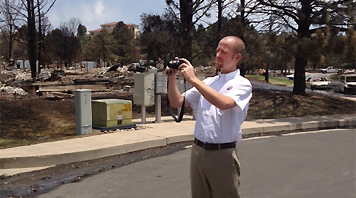|
RMIIA News Releases7951 E. Maplewood Avenue, Suite 110 Contact: Carole Walker, Executive Director Final Insurance Damage Estimates for Colorado's 2009 Summer Storm Season Puts the Official Tally at $1.4 Billion—Making It the Most Expensive in State History. May 18, 2010 – 2009 will live on in Colorado storm infamy. Mother Nature made state history last year with the most costly severe weather season adding up to more than $1.4 billion in insured damage and one July storm ranking as the state's most expensive insured disaster in actual insurance claims paid out with insured losses totaling $768 million in claims resulting from damage to vehicles and homes. The updated damage estimate makes it the most expensive catastrophe season in Colorado, topping a 45-minute hail storm that caused $625 million in damage on July 11, 1990. When adjusted for inflation, the July 11, 1990 hailstorm still tops the July 20, 2009 storm if compared in today's dollars (see chart). The Rocky Mountain Insurance Information Association estimates the final insurance damage total for the season's three catastrophic storms more than doubled from an earlier damage estimate of $617 million. Most claims are now settled and those affected by the hail, wind and tornadoes typically have one year to file insurance claims. This estimate does not include commercial claims from businesses. With the extremely large volume of losses, claim filing and repairs continued for months after the storms. The damage resulted in more than 200,000 auto and property claims. The '09 storm damage includes a week of wild weather from June 6-15 that caused an estimated $353 million in damage to property and cars in Aurora, Parker, Centennial and Fort Collins, the July 20 hail and windstorm that resulted in an estimated $768 million in auto and homeowner claims in Wheat Ridge, Lakewood and Arvada, and a $233 million hail storm that pounded Pueblo on July 29. "As we head into the 2010 severe weather season, this record price tag on last year's devastation is a wake-up call that we can't just cross our fingers and hope we don't land in Mother Nature's path," says Carole Walker, Executive Director of the Rocky Mountain Insurance Information Association. "Lessons learned from '09 are that we need to take preventative steps, like considering impact resistant roofing, to protect our property and consider how much insurance coverage you have to fix your car, repair or rebuild your home and replace your personal belongings." For more information: http://www.rmiia.org/Catastrophes_and_Statistics/Hail.asp Colorado's Most Costly Hail Storms
*2009 estimated cost calculations based on the Consumer Price Index. RMIIA recommends that you take these preventative steps: SELECT IMPACT RESISTANT ROOFING
DO AN ANNUAL INSURANCE CHECK-UP
KNOW WHAT IS & ISN'T COVERED
CREATE A HOME INVENTORY
For more consumer information on insurance topics logon to www.rmiia.org. ### Rocky Mountain Insurance Information Association is a non-profit consumer information organization. Affiliated with the Insurance Information Institute, RMIIA has been serving consumers and the media since 1952. |
|
303-790-0216 • 800-355-9524 • Contact Us • Legal Notice, Disclaimer & Terms of Use
Home • About RMIIA • News Room • P&C Insurance Industry • Auto • Homeowners • Business • Catastrophes • Agent Resources • Events & Education • Brochures

